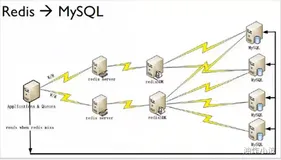版权声明:本文为博主原创文章,未经博主允许不得转载。 https://blog.csdn.net/hxdeng/article/details/52278238
1. 加入Struts2,Hibernate3.3,Spring3.3 和数据库驱动包
注意:当有包重复的时候选择高版本即可
2. 添加log4j文件和连接数据库的配置文件
log4j.rootLogger=DEBUG,File,Console
log4j.appender.Console=org.apache.log4j.ConsoleAppender
log4j.appender.Console.Target=System.out
log4j.appender.Console.layout=org.apache.log4j.PatternLayout
log4j.appender.Console.layout.ConversionPattern=[%c]%m%n
log4j.appender.File=org.apache.log4j.DailyRollingFileAppender
log4j.appender.File.File=C:/log.log
log4j.appender.File.MaxFileSize=100MB
log4j.logger.com.ibatis=debug
log4j.logger.com.ibatis.common.jdbc.SimpleDataSource=debug
log4j.logger.com.ibatis.common.jdbc.ScriptRunner=debug
log4j.logger.com.ibatis.sqlmap.engine.impl.SqlMapClientDelegate=debug
log4j.logger.java.sql.Connection=debug
log4j.logger.java.sql.Statement=debug
log4j.logger.java.sql.PreparedStatement=debug
#\u5236\u5B9A\u6D88\u606F\u8F93\u51FA\u7684\u6700\u4F4E\u5C42\u6B21
#指定消息输出的最低层次
log4j.appender.File.Threshold=debug
#包含日志产生的时间、线程、类别等等信息
log4j.appender.File.layout=org.apache.log4j.TTCCLayout
log4j.appender.File.layout.ConversionPattern=[%p][%d{yyyy-MM-dd HH\:mm\:ss,SSS}][%c]%m%n3. 添加Struts2的核心配置文件(struts.xml)和Spring的核心配置文件(applactionContext.xml)
4. 修改web.xml文件
4.1 定Spring配置文件的位置
<context-param>
<param-name>contextConfigLocation</param-name>
<param-value>classpath:applicationContext-*.xml</param-value>
</context-param>4.2 添加Spring的监听器
<listener>
<listener-class>org.springframework.web.context.ContextLoaderListener</listener-class>
</listener>4.3 添加Struts2的拦截器
<filter>
<filter-name>struts2</filter-name>
<filter-class>org.apache.struts2.dispatcher.ng.filter.StrutsPrepareAndExecuteFilter</filter-class>
</filter>
<filter-mapping>
<filter-name>struts2</filter-name>
<url-pattern>/*</url-pattern>
</filter-mapping>5. Spring的核心配置文件中配置数据
5.1 在Spring的核心配置文件中引入头文件
<beans xmlns="http://www.springframework.org/schema/beans"
xmlns:xsi="http://www.w3.org/2001/XMLSchema-instance"
xmlns:context="http://www.springframework.org/schema/context"
xmlns:aop="http://www.springframework.org/schema/aop"
xmlns:tx="http://www.springframework.org/schema/tx"
xsi:schemaLocation="http://www.springframework.org/schema/beans
http://www.springframework.org/schema/beans/spring-beans-3.0.xsd
http://www.springframework.org/schema/aop
http://www.springframework.org/schema/aop/spring-aop-3.0.xsd
http://www.springframework.org/schema/tx
http://www.springframework.org/schema/tx/spring-tx-3.0.xsd
http://www.springframework.org/schema/context
http://www.springframework.org/schema/context/spring-context-3.0.xsd">5.2 引入数据库配置文件的位置
<!-- 数据库配置文件位置 -->
<context:property-placeholder location="classpath:jdbc.properties" />5.3 配置连接数据库的数据源
5.3.1 DruidDataSource
<!-- 配置数据源 -->
<bean name="dataSource" class="com.alibaba.druid.pool.DruidDataSource" init-method="init" destroy-method="close">
<property name="url" value="${jdbc_url}" />
<property name="username" value="${jdbc_username}" />
<property name="password" value="${jdbc_password}" />
</bean>5.3.2 dbcp
<!-- 配置dbcp数据源 -->
<bean id="dataSource" class="org.apache.commons.dbcp.BasicDataSource" destroy-method="close">
<property name="driverClassName" value="${driverClassName}" />
<property name="url" value="${jurl}" />
<property name="username" value="${username}" />
<property name="password" value="${password}" />
</bean>5.3.3 c3p0
<!-- 配置c3p0数据源 -->
<bean id="dataSource" class="com.mchange.v2.c3p0.ComboPooledDataSource" destroy-method="close">
<property name="driverClass" value="${driverClassName}" />
<property name="jdbcUrl" value="${jdbcUrl}" />
<property name="user" value="${user}" />
<property name="password" value="${password}" />
<!-- 队列中的最小连接数 -->
<property name="minPoolSize" value="15"></property>
<!-- 队列中的最大连接数 -->
<property name="maxPoolSize" value="25"></property>
<!-- 当连接耗尽时创建的连接数 -->
<property name="acquireIncrement" value="15"></property>
<!-- 等待时间 -->
<property name="checkoutTimeout" value="10000"></property>
<!-- 初始化连接数 -->
<property name="initialPoolSize" value="20"></property>
<!-- 最大空闲时间,超出时间连接将被丢弃 -->
<property name="maxIdleTime" value="20"></property>
<!-- 每隔60秒检测空闲连接 -->
<property name="idleConnectionTestPeriod" value="60000"></property>
</bean>6. 配置SessionFactory
<!-- 配置SessionFactory -->
<bean id="sessionFactory" class="org.springframework.orm.hibernate3.LocalSessionFactoryBean">
<property name="dataSource">
<ref bean="dataSource" />
</property>
<property name="hibernateProperties">
<props>
<prop key="hibernate.dialect">
org.hibernate.dialect.MySQL5Dialect
</prop>
<prop key="hibernate.show_sql">true</prop>
<prop key="hibernate.format_sql">true</prop>
</props>
</property>
<!-- mappingLocations[可以指定任何文件路径;并且可以指定前缀,也可以用通配符] -->
<property name="mappingLocations">
<list>
<value>classpath:com/hy/ssh/pojo/*.hbm.xml</value>
</list>
</property>
<!-- mappingResources[指定classpath下具体映射文件名]
<property name="mappingResources">
<list>
<value>com/hy/ssh/pojo/Product.hbm.xml</value>
</list>
</property>
-->
<!-- mappingDirectoryLocations[指定映射的文件路径]
<property name="mappingLocations">
<list>
<value>classpath:com/hy/ssh/pojo/</value>
</list>
</property>
-->
<!-- mappingJarLocations[指定加载的映射文件在jar文件中] -->
</bean>6. 配置事务
<!-- 配置事务 -->
<bean id="txManager" class="org.springframework.orm.hibernate3.HibernateTransactionManager">
<property name="sessionFactory" ref="sessionFactory" />
</bean>7. 事务的通知方式
<!-- 事务的通知方式 -->
<tx:advice id="txAdvice" transaction-manager="txManager">
<tx:attributes>
<tx:method name="find*" propagation="REQUIRED" read-only="true" />
<tx:method name="search*" propagation="REQUIRED" read-only="true" />
<tx:method name="query*" propagation="REQUIRED" read-only="true" />
<tx:method name="add*" propagation="REQUIRED" />
<tx:method name="submit*" propagation="REQUIRED" />
<tx:method name="save*" propagation="REQUIRED" />
<tx:method name="insert*" propagation="REQUIRED" />
<tx:method name="del*" propagation="REQUIRED" />
<tx:method name="remove*" propagation="REQUIRED" />
<tx:method name="update*" propagation="REQUIRED" />
<tx:method name="modify*" propagation="REQUIRED" />
<tx:method name="*" propagation="REQUIRED" read-only="true" />
</tx:attributes>
</tx:advice>说明:Spring在TransactionDefinition接口中规定了7种类型的事务传播行为,它们规定了事务方法和事务方法发生嵌套调用时事务如何进行传播
| 事务传播行为类型 | 说明 |
|---|---|
| PROPAGATION_REQUIRED | 如果当前没有事务,就新建一个事务,如果已经存在一个事务中,加入到这个事务中。这是最常见的选择。 |
| PROPAGATION_SUPPORTS | 支持当前事务,如果当前没有事务,就以非事务方式执行。 |
| PROPAGATION_MANDATORY | 使用当前的事务,如果当前没有事务,就抛出异常。 |
| PROPAGATION_REQUIRES_NEW | 新建事务,如果当前存在事务,把当前事务挂起。 |
| PROPAGATION_NOT_SUPPORTED | 以非事务方式执行操作,如果当前存在事务,就把当前事务挂起。 |
| PROPAGATION_NEVER | 以非事务方式执行,如果当前存在事务,则抛出异常。 |
| PROPAGATION_NESTED | 如果当前存在事务,则在嵌套事务内执行。如果当前没有事务,则执行与PROPAGATION_REQUIRED类似的操作。 |
8. 切面
<!-- AOP切面拦截事务 -->
<aop:config>
<aop:pointcut id="serviceMethod" expression="execution(* com.hy.ssh.services.*.*(..))" />
<aop:advisor advice-ref="txAdvice" pointcut-ref="serviceMethod" />
</aop:config>9. 引入Spring其他文件[bean…..]
<import resource="xxx.xxx.xxx.xxx.xml" />10. 编写各类bean
注意:Action的bean需要修改作用域,默认是单利模式,需要修改为每次请求进来重新创建Bean对象 scope="prototype"11. 完善web.xml文件
11.1 添加编码格式过滤器
<filter>
<description>字符集过滤器</description>
<filter-name>encodingFilter</filter-name>
<filter-class>org.springframework.web.filter.CharacterEncodingFilter</filter-class>
<init-param>
<description>字符集编码</description>
<param-name>encoding</param-name>
<param-value>UTF-8</param-value>
</init-param>
</filter>
<filter-mapping>
<filter-name>encodingFilter</filter-name>
<url-pattern>/*</url-pattern>
</filter-mapping>11.2 添加系统session过期时间
<!-- 配置session超时时间,单位分钟 -->
<session-config>
<session-timeout>15</session-timeout>
</session-config>11.3 配置内存监听事件
<!-- 防止spring内存溢出监听器 -->
<listener>
<listener-class>org.springframework.web.util.IntrospectorCleanupListener</listener-class>
</listener>11. 4 添加OpenSessionInView过滤器
<filter>
<filter-name>OpenSessionInViewFilter</filter-name>
<filter-class>org.springframework.orm.hibernate3.support.OpenSessionInViewFilter</filter-class>
</filter>
<filter-mapping>
<filter-name>OpenSessionInViewFilter</filter-name>
<url-pattern>/*</url-pattern>
</filter-mapping>


